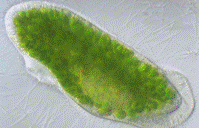Biological Sciences, School of

School of Biological Sciences: Faculty Publications
Document Type
Article
Date of this Version
2-2016
Citation
Mol Ecol. 2016 February ; 25(3): 723–740. doi:10.1111/mec.13446.
Abstract
Examples of clinal variation in phenotypes and genotypes across latitudinal transects have served as important models for understanding how spatially varying selection and demographic forces shape variation within species. Here, we examine the selective and demographic contributions to latitudinal variation through the largest comparative genomic study to date of Drosophila simulans and Drosophila melanogaster, with genomic sequence data from 382 individual fruit flies, collected across a spatial transect of 19 degrees latitude and at multiple time points over 2 years. Consistent with phenotypic studies, we find less clinal variation in D. simulans than D. melanogaster, particularly for the autosomes. Moreover, we find that clinally varying loci in D. simulans are less stable over multiple years than comparable clines in D. melanogaster. D. simulans shows a significantly weaker pattern of isolation by distance than D. melanogaster and we find evidence for a stronger contribution of migration to D. simulans population genetic structure. While population bottlenecks and migration can plausibly explain the differences in stability of clinal variation between the two species, we also observe a significant enrichment of shared clinal genes, suggesting that the selective forces associated with climate are acting on the same genes and phenotypes in D. simulans and D. melanogaster.
Includes supplementary materials.


Comments
© 2015 John Wiley & Sons Ltd